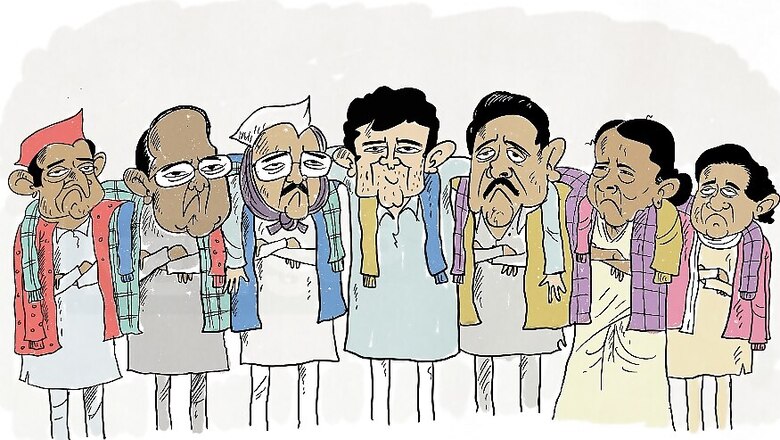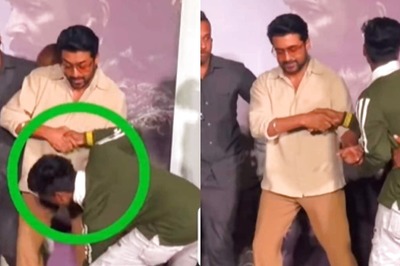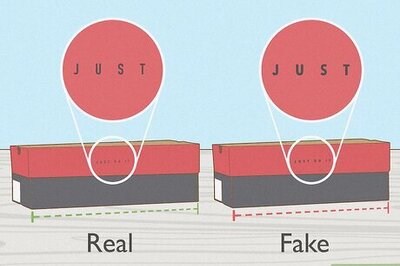
views
Prior to the 1990s, coalition governments in Indian politics were considered to be an aberration and not particularly desirable. The lack of coalitions in India was clearly tied to the one-party preponderance of the Congress. So, when the party sensed defeat in the 1989 Lok Sabha election, it tried to remind voters of how shambolic the 1977 Janata government had been.
The VP Singh-led National Front government formed in 1989 was perhaps the strangest political entity that people had witnessed in Indian politics. Propped up by the Left parties on one side, and the right-wing BJP that provided support with its 86 seats on the other – the government proved to be short lived.
The grand old party then supported the Chandrashekhar Singh government for four months, after which it decided to withdraw support and elections in 1991 brought back a Congress-led coalition government in the country. With that, the era of coalition politics was well and truly upon us.
Coalition governments were the new normal in Indian politics and would continue to be so until 2014, when the Narendra Modi-led government became the first in three decades since 1984, to win a clear majority.
In 1996, there was a short-lived Vajpayee-led BJP government for 13 days, followed by the rather soporific one led by HD Deve Gowda that lasted until 1997. After that, IK Gujral led the United Front coalition government that lasted from April 1997 to March 1998.
By then, the political scenario of the country was beginning to look a bit like a game of musical chairs. However, things stabilised with Atal Bihari Vajpayee returning in 1998, hanging on for a year and then getting re-elected in 1999 to finally last a whole term.
After that, with a full decade of the Congress led United Progressive Alliance leading the way, Indian politics developed a version of the two party system, rather, a two coalition system. Numerous political parties have coalesced around BJP and the Congress in the form of the National Democratic Alliance and the United Progressive Alliance, respectively.
Congress governments in coalition have brought about some of the most momentous and far-reaching changes. It was the Narasimha Rao-led government that introduced the economic reforms, which for better or worse, changed the country tremendously.
One simple indicator of the worth of coalitions is the fact that many thought that the UPA-I government was too hobbled by the presence of the Left, as it was a hindrance to the economic reforms associated with Congress governments since 1991.
The withdrawal of Left support, followed by the more emphatic victory that led to UPA-II in 2009, was supposed to bring in a more decisive and unfettered government. Yet, it is the UPA-I government that is remembered for the succession of rights-based legislation it introduced, while UPA II has come to be associated with crony capitalism.
Similarly, the NDA-I government of Vajpayee, with all of its coalition pulls and pressures ensured two things. First, the core and often contentious BJP issues, which are Article 370, Babri Masjid and Uniform Civil Code, were relegated to the back-burner.
Second, the Vajpayee-led BJP government could well and truly be said to have a fringe and a centre, with the fringe remaining where any fringe should belong.
However, the ruling BJP government of the day has once again brought the core contentious issues to the forefront. It has also ensured that the fringe encompasses the party uniformly, leaving no hint of nuance or differentiation.
What this suggests is that weaker coalitions may actually perform better. More importantly, coalitions are able to more naturally weave in the vital regional parties that act as breakwaters in the path of potentially elective despotism.
Are majority governments over-rated?
What have supposedly strong and stable majority governments been able to do? Have they taken decisive measures or brought about ‘big-ticket economic reforms’, untroubled by the petty pulls of coalition partners?
Take the 1984 Rajiv Gandhi government with its mammoth majority of above 400 hundred seats. In less than two years, it started playing communally divisive politics around the Babri Masjid and Shah Bano issues.
The Congress thought it was being cleverly even handed by dealing out both majority and minority communal cards. The drift in the Rajiv Gandhi government could be sensed right in the middle of its term when it lost badly in the Haryana assembly elections of 1987. It lost the hugely symbolic Allahabad by-election in 1988 to V.P. Singh, and the rest we are prone to saying, is history.
The question then is this: Could the supposed strength and stability provided by majority governments be overrated? What has the Modi government achieved on the back of its huge mandate? Has it squandered that majority much like the Rajiv Gandhi led government of 1984-89? Can Modi return to power? This has been a bit of a see-saw question.
When Modi’s government came to power with a huge landslide, or ‘tsunami’ if you will, conventional wisdom was that he was here to stay for at least two terms. The UP assembly elections in 2017 seemed to confirm this. After that, it has been more of a will he/won’t he guessing game. The jury is well and truly out on this one.
The author is an assistant professor Centre for Political Studies, JNU.


















Comments
0 comment